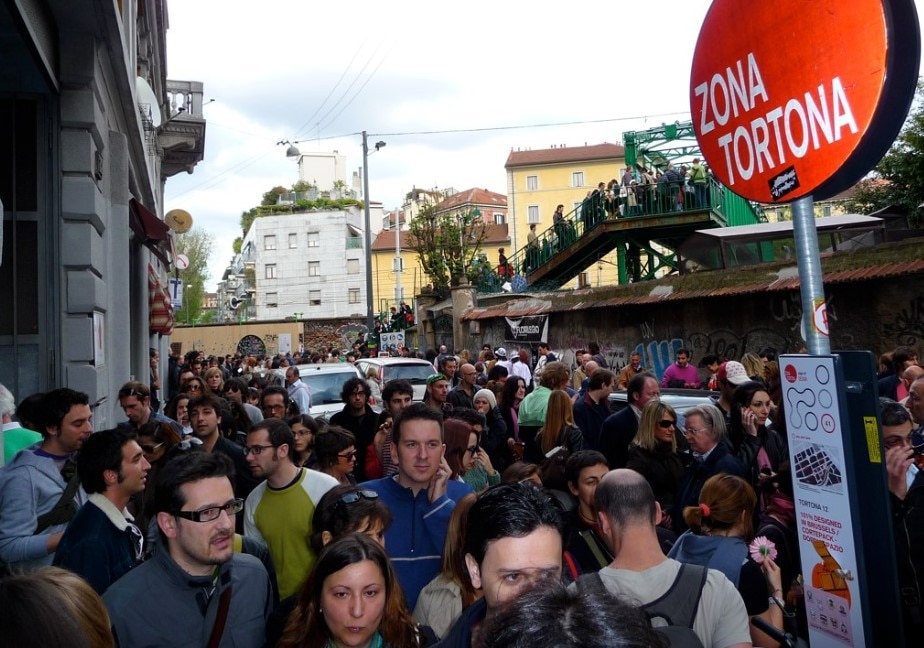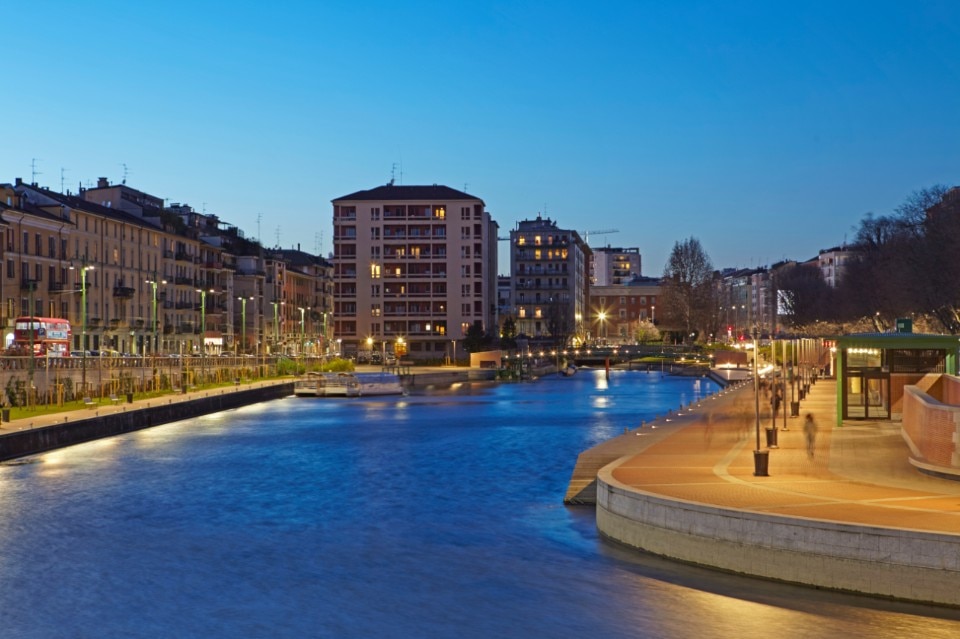A few years back, I found myself tasked with a job I’d never done before: scouting a location in Milan for a Northern European design brand. The brief seemed straightforward – nothing too flashy, but a space suitable for both office operations and exhibitions, especially during peak periods. The preferred neighborhoods were Tortona or Brera, with a generous budget at my disposal and compensation that seemed great compared to newspaper fees.
I was wrong. What I had imagined as an easy-peasy task, with rows of charming street shops, vacant urban sheds, and empty multi-level venues overlooking the charming Milanese courtyards that both areas teemed with, turned out to be a daunting challenge.

This emptiness was nothing but an illusion. It was only temporary, or rather, intermittent. These spaces were not intended for long-term occupancy by a single tenant but were available for weekly rentals – a quintessentially Milanese feature, given the city’s bustling “weeks.” The Airbnbization phenomenon had seeped into commercial real estate as well, with landlords recognizing the potential for higher returns from short-term rentals. And just like that, jewelry boutiques, fashion showrooms, furniture stores, florists, and bookstores were gone. Even money-laundering pizzerias couldn’t compete with the prices of Fashion Week and Design Week, let alone accommodate the budget of a modest lamp business.
Indeed, this is yet another poisoned gift from the Fuorisalone to the city. Its evolution from a lively exhibition and celebration to an instrument of “urban regeneration” has coincided with the diminishing presence of experimental content and conviviality during the event itself. Despite the apparent vibrancy of the crowds, visitors often find themselves rushing from one overcrowded venue to the next, spending precious time in long queues and going on and on about the latest trends and freebies: “Did you see this? Did you see that? Did you get that totebag?”
Soon, the district’s appeal waned, real estate prices rose, and the quality of the offerings veered toward kitsch.

More importantly, it has fostered a particularly aggressive form of gentrification. In areas where it has taken root, Fuorisalone has stifled the potential for building a stable commercial fabric and making long-term investments aimed at providing services and employment opportunities for residents while fostering local networks. What were once potential shops, workshops and studios have been transformed into transient, neutral spaces, perpetually waiting to be furnished and vacated. Streets vacillate between overwhelming tourist traffic and a sense of desolation.
This emptiness was nothing but an illusion. It was only temporary, or rather, intermittent. These spaces were not intended for long-term occupancy by a single tenant but were available for weekly rentals – a quintessentially Milanese feature, given the city’s bustling weeks.

Tortona was Milan’s first short-lived district. Its vast former factory buildings had attracted the pioneers of the design world, and within its walls one could see surprising, spectacular or exploratory exhibitions, less institutional than those of the Fiera and more fun than the congealed displays of the traditional Brera showrooms. Soon, however, the district’s appeal waned, real estate prices rose, and the quality of the offerings veered toward kitsch. The Fuorisalone networks began planning new districts, in a kind of never-ending extractive gold rush – a competition to find the longest vein among downtown and suburban buildings.

The most striking episode of this colonization narrative bears the signature of the Dutch, who descended mercilessly on Lambrate in 2010. At the time, the area was in an uncertain state: although largely perceived as a residential suburb, Via Ventura stood out as a hub of creativity. After a post-industrial luxury real estate intervention, prestigious professional studios, art galleries and design schools had gathered here. In addition, other spaces for the creative class began to emerge. There was even a fake squat, unoccupied, which the owner made available to young architects and artists for underground performances.
But gentrification did not take off, the bars remained shabby, and prices stagnated. Margriet Vollemberg, head of the company Organization in Design, transformed these somewhat sad streets into a hub of coolness, flooding them with young hipster Vikings from Dutch, Swedish, and Swiss design schools, accompanied by streams of beer, ubiquitous pallets, and politely rebellious DJ sets. Lambrate became a sensation and caused a frenzy among real estate developers. But their blonde angel eventually betrayed them, relocating under the tracks of the Central Station a few years later. The move triggered a mass exodus of galleries and architecture and art studios, solidifying NoLo’s rise while expelling its poor residents.

Aware of their power to shape and reshape urban landscapes, to increase or destroy property values, the curators of the Fuorisalone had now fully embraced urban marketing strategies, drawing new geographies on the city map, albeit with varying degrees of success: Bovisa has so far failed to gain traction, while Isola was already too expensive for substantial colonization. However, following the remarkable surge of visitors to the ruins of the former slaughterhouse, repurposed for Alcova in 2023 to showcase the future development of the area, even residents of the hinterland are not immune to the encroaching threat.
Opening image: Photo Massimo Pizzotti via Adobe Stock

